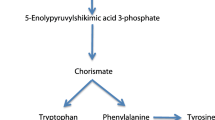Abstract
This study addresses the measurements of glyphosate exposure received by 14 workers employed at two tree nurseries. The applicators, weeders, and scouts monitored all wore normal work clothing, which for applicators was a protective suit, rubber gloves and boots. Measurements were made of the glyphosate that was dislodged from conifer seedlings during water rinses taken twice weekly from May through August. Only 1 of these 78 dislodgeable residue samples were positive for glyphosate. Nine cotton gauze patches were attached to the clothing of each worker one day per week during this same period. Hand washes were taken on the same day that patches were worn. Most patches and hand washes from applicators and weeders contained measurable amounts of glyphosate. Analyses of individual patches showed that the body portions receiving the highest exposure were ankles and thighs. For scouts only 1 of 23 hand washes contained glyphosate. To provide a measure of the exposure occurring via all exposure routes (dermal, ingestion, and inhalation) an analysis was made of the total urine excreted. For most workers a daily total urine collection was made for 12 consecutive weeks. Urine analysis, the biological monitoring tool used to assess the total amount absorbed via all avenues, did not reveal any positive samples. The lower limit of method validation for glyphosate in the urine samples was 0.01 μg/ml.
High rainfall, or irrigation as needed, in conjunction with normal field dissipation avenues and worker training were cited as contributing factors for the low amounts of glyphosate exposure found. None of the exposure parameters indicated that glyphosate exposure poses a threat to human health when used under normal nursery conditions.
Similar content being viewed by others
References
Cowell JE, Steinmetz JR (1990) Assessment of forestry nursery workers exposure to glyphosate during normal operations, Report MSL-9655. Monsanto Co, February, pp 142–171
Dirks RC (1982) Elimination and dermal penetration in monkeys. Roundup® formulation: Monsanto Final Report MA-81-349, MRID Number MA 00137139
Federal Register, January 29, 1990, Vol 55, No 19, pp 2844–2845
Goldsborough LG, Beck AE (1989). Rapid dissipation of glyphosate in small forest ponds. Arch Environ Contam Toxicol 18:537–544
Grover R, Cessna AJ, Muir NI, Riedel D, Franklin CA, Yoshida K (1986) Factors affecting the exposure of ground-rig applicators to 2, 4-D dimethylamine salt. Arch Environ Contam Toxicol 15:677–686
Lavy TL, Shepard JS, Mattice JD (1980) Exposure measurements of applicators spraying 2,4, 5-T in the forest. J Agric Food Chem 28:626–630
Lavy TL, Walstad JD, Flynn RR, Mattice JD (1982) 2, 4-D exposure received by aerial application crews during forestry spray operations. J Agric Food Chem 30:375–381
Lavy TL, Norris LA, Mattice JD, Marx DB (1987) Exposure of forestry ground applicators to formulations of 2, 4-D, picloram, and dichlorprop. Environ Toxic Chem 6:209–224
Lavy TL, Mattice JD, Massey JH, Skulman BW (1989) Completion report to USDA Forest Service “Pesticide exposure assessment of nursery workers.” University of Arkansas, 227 pp
Libich S, To JC, Frank R, Sirons GJ (1984) Occupational exposure of herbicide applicators to herbicides used along electric power transmission line right-of-way. Am Ind Hygiene Assoc J 45(1):56–62
Murphy RS, Kutz FW, Strassman SC (1983) Selected pesticide residues or metabolites in blood and urine specimens from a general population survey. Environ Health Persp 48:81–86
Nash RG, Kearney PC (1982) Agricultural applicators exposure to 2, 4-dichlorophenoxyacetic acid. pp 119–132. In: ACS Sym Series No. 182 Pesticide Residues and Exposure
Newton M, Howard KM, Kelpsas BR, Danhaus RG, Lottman CM, Dubelman S (1984) Fate of glyphosate in an Oregon forest ecosystem. J Agric Food Chem 32:1144–1151
Roy DN, Konar SK, Banerjee S, Charles DA, Thompson DG, Prasad R (1989) Persistence, movement, and degradation of glyphosate in selected Canadian boreal forest soils. J Agric Food Chem 37:437–440
Salazar LC, Appleby AP (1982) Herbicidal activity of glyphosate in soil. Weed Science 30:463–366
Winterlin WL, Kilgore WW, Maurer CR, Schoen SR (1984) Worker reentry studies for captan applied to strawberries in California. J Agric Food Chem 32:664–672
Author information
Authors and Affiliations
Rights and permissions
About this article
Cite this article
Lavy, T.L., Cowell, J.E., Steinmetz, J.R. et al. Conifer seedling nursery worker exposure to glyphosate. Arch. Environ. Contam. Toxicol. 22, 6–13 (1992). https://doi.org/10.1007/BF00213295
Received:
Issue Date:
DOI: https://doi.org/10.1007/BF00213295




